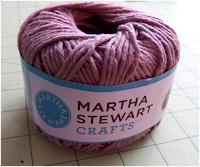It was pointed out to me recently that I never made a summer felt texture book for little c to go with her spring book. Wow. I completely forgot that I was going to do a seasonal series! Well, summer's long gone so I went on to autumn. I'll do a winter one next and then the summer book next spring. I might need to be reminded .....
Materials:
*Four pieces of 12 x 9 felt for the book cover and pages
*small pieces of felt and textured fabric (I'll go over what I used as we get to each page)
*feathers, googly
eyes, bat beads or buttons
*fabric autumn leaves, leaves for the apples, and leaves for the pumpkin patch (I used grape leaves)
*pre-cut foam or felt letters - or if you have a die-cut press, you can make your own
*felt glue
*Aileene's Jewel-It
*embroidery floss
*
patterns found here
Book:
The basic instructions for making the book are in the post for the
Spring Felt Texture Book.
Cover:
Pin a fabric autumn leaf in the middle of the page and sew down the center with coordinating embroidery thread, using a running stitch and 6 strands. With 6 strands of thread, use a running stitch to suggest movement from the leaf falling.
Pages 2-3:
I used brown textured felt for the branches.
1. You will be skipping to what looks like pages 3-4, since we'll be
sewing each page to the page next to it. This will make the pages a
little sturdier and hide any sewing knots, etc.
2. Pin or glue on the branches as shown. Use 2 strands of thread to attach, with a
blanket stitch. Pin on leaves and sew down the center as you did with the cover leaf.
Pages 4-5:
Cut two apples from shiny red fabric. Lay on page 4 and pin apple leaves in position. Sew down the center of each leaf to attach. Remove and save the apples - you'll glue them on at the end.
Cut a turkey body from brown textured felt, a yellow triangle for the beak, and a red gobbler thingy. Lay the body on page 5 and glue feathers behind it. Using a blanket stitch, attach the edges of the turkey. Glue on googly eyes, the beak and the red part.
Pages 6-7:
Cut a moon and stars from felt - I used sparkly white for the moon and gold for the stars. Pin and attach with a blanket stitch. If you want sparkly stars, you can add sparkly puffy paint to them. Sew on bats.
Attach pumpkin patch leaves by sewing down the center.
Cut four circles from shiny orange fabric (about 3 inches in diameter). Free hand cutting works fine for this - you don't need perfect circles. Using 2 strands of embroidery thread, sew around each circle, pulling up to gather the edge a little bit.
Turn edge under and attach pumpkin using a blanket stitch.
Finishing:
Attach pages together using a blanket stitch and 6 strands of embroidery thread.
One page at a time, glue the letters in place with Aileen's Jewel It (and the apples when you get to page 4). The glue takes awhile to dry and cure. I glue one
page worth, cover with waxed paper, and pile on several heavy books. I
leave it like this for about 4 - 6 hours, then let it dry for either the
rest of the day or overnight before I move on to the next page.
Here is what your finished pages will look like:
Happy Creating! Deborah




















































